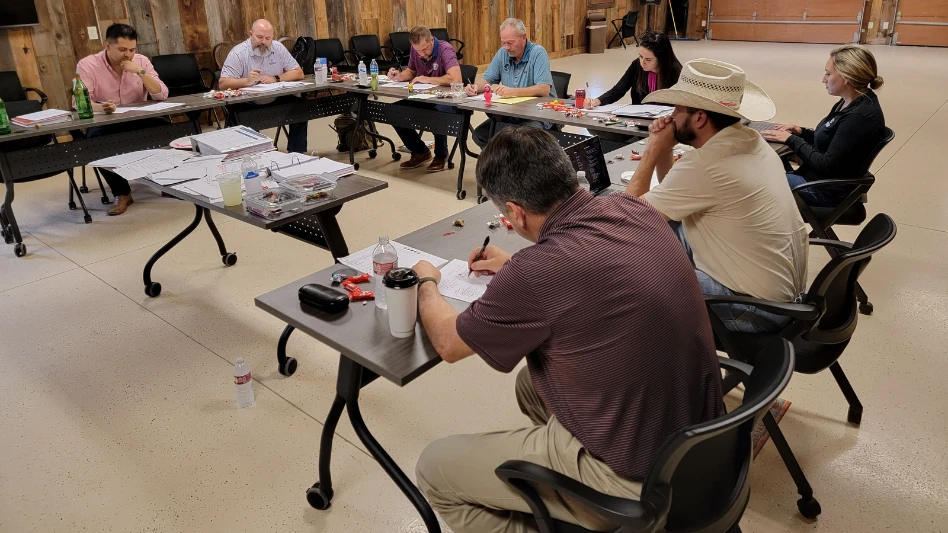With 62 percent of contractors saying they’ve had to turn down jobs due to hiring and retention difficulties, it’s clear there are staffing issues in the green industry. One way to make your company more attractive to current and potential employees is to develop a training program. Follow these 11 steps to create an effective one.
1. SENIOR LEADERSHIP “BUY-IN”
For any internal training program to succeed, the most important component is senior management “buy-in.” When installing a training program you may actually need to create a whole new culture around learning. Senior management needs to show a unified front and distribute training opportunities throughout the organization. This is how corporate standards for quality can be established and maintained.
2. BUDGET
When you look into companies rated “the best” you consistently find they have a healthy budget for training. When a company feels they cannot find any money for training, it is obvious they have not calculated the cost of re-work, lost jobs, customers not renewing, turnover, etc. Although difficult to measure, training is a money saver. In the landscape industry it is hard to get people to commit the time to train. Both money and time must be budgeted.
3. ACCOUNTABILITY, SYSTEMS, GUIDELINES
All individuals up and down the organization need to be held accountable for training. In order to be fair, a company needs a system to ensure everyone in similar positions is offered the same training opportunities. Companies will have to decide:
- If they will pay the participants for time spent in training
- Who will approve the content
- Who will deliver the training
- The time and place of the training
- How the effectiveness of the training will be measured
4. NEEDS ANALYSIS
For a complete training program, it’s best to start out with a comprehensive training needs analysis. This includes:
- A targeted, confidential employee skills and training needs survey.
- Interviews with groups and individuals from senior management to crew members that are often done through site ride-alongs.
5. STANDARDIZATION
Most successful training implementations start with programs to standardize management practices and field techniques, for both Anglo and Hispanic employees, getting everyone on the same page.
6. TRAIN THE TRAINER(S)
Many landscape trainings fail because they are not customized to a variety of learners. Most landscape professionals are “kinetic learners.” They learn best by touching and doing. Auditory and visual learners are usually contented in “classroom” style learning. When you have Generation Y young folks with Baby Boomers in the same group, the trainer needs experience and skills in meeting people where they are. All programs are ideally available in English and Spanish at different levels.
7. CORE TRAINING
Every company will determine what it considers its core programs. For example, one core training for pro-active companies is “Discipline with Dignity.”
- Standardize disciplinary practices Employees need to feel the company is fair. Sometimes in one branch an employee might do something and get suspended, yet in another branch the same violation will be ignored.
- Train everyone on the work improvement process When you make it simpler and clearer for supervisors and managers to know what to do in disciplinary situations, they will execute. Without training, many managers are unsure of themselves and lack the confidence to deliver discipline. Some companies pre-determine consequences. Others handle each situation separately. Standardization of consequences is essential both for fairness and legality.
8. TRAINING COORDINATOR POSITION
In companies that can afford a training coordinator position, the company will need a customized training coordinator job description and the right questions to interview candidates. Once in place, the training coordinator will help develop, deliver, schedule, track and assess the ROI from training. They will work with subject matter experts to design training programs to enhance skill sets at all levels.
9. CONSULTANTS
For the initial start-up of a training program, you may need the help of consultants. Be sure to ask what they know about adult learning principles, organizational structures and the landscape industry.
10. EXECUTIVE/ MANAGEMENT COACHING
For the maximum impact, training programs need to be coordinated with executive/management coaching. The executives’ role is to assist managers in coaching their people for better work performance, to resolve conflict and to motivate.
11. MEASUREMENTS OF TRAINING IMPACT
Some of the ways used to measure the impact of your training efforts would be:
- Time certain tasks before and after training.
- Survey the overall morale and level of employee satisfaction.
- Look for better quality sites:
- Fewer call-backs
- Fewer customer complaints
- More customer compliments
- Higher customer satisfaction
- Higher employee satisfaction
- High client and employee retention
- Increased revenue
of training for The Brickman Group.

Explore the January 2016 Issue
Check out more from this issue and find your next story to read.
Latest from Lawn & Landscape
- LMN partners with Attentive.ai
- Get to know the generations working for you
- Addressing addiction in landscaping
- Fairway expands national footprint with 6 acquisitions
- Graze Robotics opens new headquarters in Plano, Texas
- Addiction in the green industry
- Kress earns Sourcewell approval
- The best laid plans





